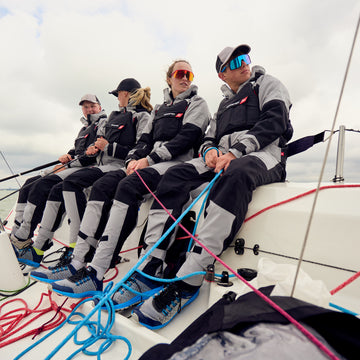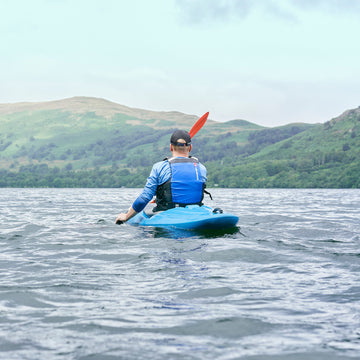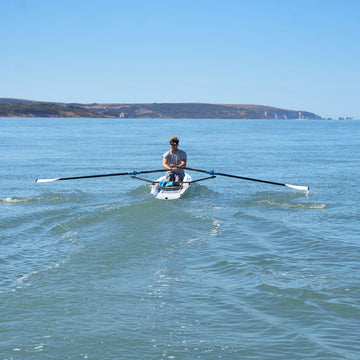I have always thought of myself as a lightweight whilst racing the Solo. In 2022 I was 74Kg which was not the lightest or heaviest I have been over my 35 years of Solo sailing.
Actually the Solo is quite forgiving for lightweights as its not really a boat for 'bow- down' windward beats, drag racing to the corner. Sailing to windward is not as compromised in the Solo as it would be in say a Laser or Aero where vang sheeting when overpowered seriously compromises pointing.
Height is king in the Solo fleet which makes the shifts drive the tactics around the course.
Once you start sailing on waves and big winds, only those lightweights who have a good technique and good equipment will hang in against the bigger teams. The hull needs to have its weight centralised as much as possible. I also changed my battens for Carbon Battens and used the D+ no sleeve as it has minimum weight and even changed my forestay for the lightest weight possible under the rules as all of these will help stop the boat bobbing in the waves upwind.
I also used for the first time an E&V rudder blade that was just under 1Kg ( 953g to be exact ). We have been testing this with Mark Harper for the winter series of 2022/23 at Dell Quay to test its longevity in extreme conditions before we put it on the market. That's a nice saving of at least 0.5Kg at the end of the boat! It will be on the market quite soon.
Wave technique explained:
First principle - you want to help the boat match the waves as you sail over them. As the boat is in the transition from bow down to bow up (the gap between the waves ) its then that a short stab away from you with the tiller will help lighten the bow, reducing the impact of the crest, this also allows you to enjoy the apparent wind lift lift due to the rig moving slower than the hull. The rudder in push mode with a little heel sinks the transom to lift the bow. - and when pulled, lifts the transom and stops the bow from taking off the top of the wave. One really needs to get the bow to stick to the back face of a wave to begin the journey back up the next wave.
Check out these techniques explained in more detail on the Boat Whisperer DVDs - Upwind - (digital download version).
Effective Hiking:
When you are on the small side, its really important to minimise bum droop hiking. The side deck of a solo actually encourages you to droop your bum over the side - but this adds to your boats heel as you also then try and keep your bum away from the water; it also makes for painful hiking. Better to have tight grippy toe straps (the Rooster version is excellent and uses tenara® thread as the rubber grip is soo grippy) so you can point your toes without falling out; pointing your toes helps straighten your leg (bit like a ballerina) which helps maximise your effective height - and with less stress to boot. Your femur is the longest leg bone - if you droop hike it points downwards - if you hike with pointy toes and a straight leg - it points outwards. I tend to strap my feet to the coffee table with the toestrap which holds my knee down to the side deck and gives my hiking short battens the best effect at holding my bum up. Boots that also hold your foot whilst you can still point your toes is also a must. I prefer the Pro Laced version.


Gear wise:
I used the Winder Mk1 in 2006 and the Boatyard at Beer in 2014, coming second in both of them. Twenty years on the Ovi/Rooster/Ginger (you know what I mean) achieved another second in 2022. I think the results speak for themselves.
I am a fan of the Selden D+ mast (no sleeve). Perhaps because is works so well when vang sheeting. In the past I have let the shrouds go a little, but in 2022 I used the standard set up and was fast upwind and downwind in the light and in the breeze.
Taxi's HD design was a standard cut sail used on 6001 and behaved flawlessly throughout the range of conditions.
P.S. 6001 is for sale to a good home as I can't be at two regattas at the same time.












 Select Store
Select Store
 EU
EU
 US
US
